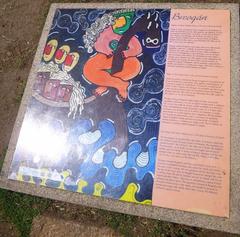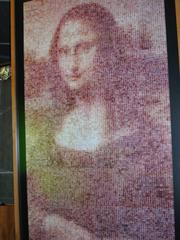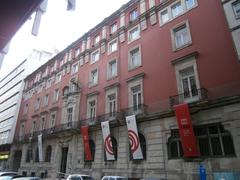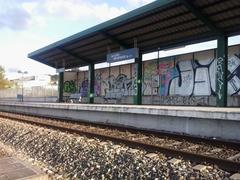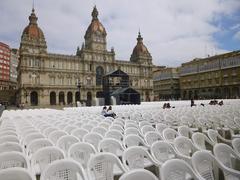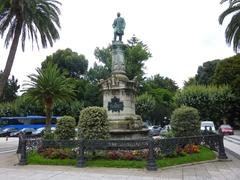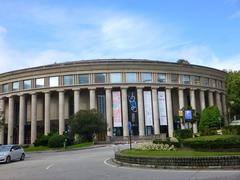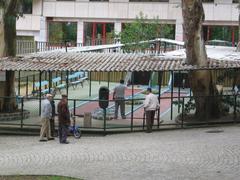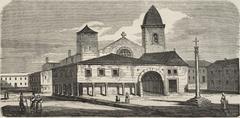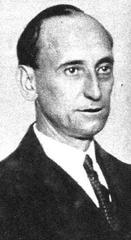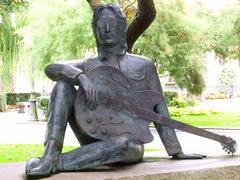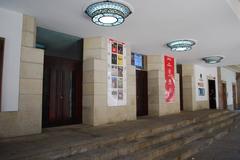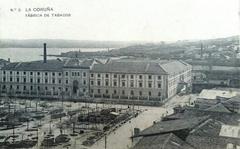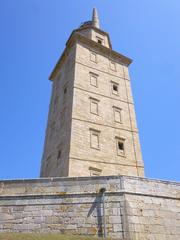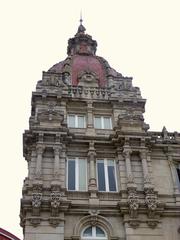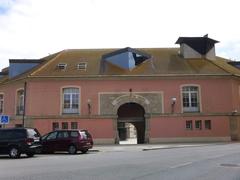
Parque de Oza: Visiting Hours, Tickets & Attractions in A Coruña
Date: 04/07/2025
Introduction to Parque de Oza in A Coruña
Parque de Oza, nestled within the dynamic Castrillón neighborhood of A Coruña, Spain, is one of the city’s most cherished urban green spaces. Spanning over 55,000 square meters, this park is a vibrant fusion of natural beauty, historical legacy, and contemporary urban life. From its origins as an 18th-century rural enclave to its role in innovative urban planning, Parque de Oza stands as a testament to the evolving history and community spirit of A Coruña (La Voz de Galicia, Wikipedia).
This guide explores Parque de Oza’s historical significance, ecological value, current visitor information—including opening hours, accessibility, and directions—and its pivotal role in ongoing urban renewal projects. Whether you are a nature enthusiast, family visitor, or cultural explorer, Parque de Oza offers a welcoming retreat and a window into A Coruña’s heritage.
Table of Contents
- Origins and Historical Evolution
- Urban Integration and Community Advocacy
- Construction and Park Features
- Archaeological and Heritage Value
- Visitor Information
- Key Attractions and Amenities
- Urban Development & Sustainability
- Frequently Asked Questions (FAQ)
- Plan Your Visit & Additional Tips
- Conclusion
- References and Further Reading
Origins and Historical Evolution
The area that is now Parque de Oza has roots dating back to the 18th century, when it was characterized by woodlands, agricultural parcels, and a small rural population. Notable features such as a chapel and bridge were recorded in 1726, anchoring the area as a rural enclave on A Coruña’s outskirts (La Voz de Galicia).
The land included a señorial estate, which eventually fell into disuse. The historic Camiño do Corgo connected Monelos with the city’s upper areas, retaining the rural identity even as A Coruña expanded (Wikipedia).
Urban Integration and Community Advocacy
A transformative moment came in 1912 with the merger of the municipality of Santa María de Oza into A Coruña, paving the way for urban planning and integration (La Voz de Galicia). As the surrounding neighborhoods grew, community demand for green spaces intensified. In 2005, local advocacy led to formal plans for a park, overcoming challenges of complex land ownership involving private owners, foundations, and public entities (Wikipedia, La Opinión A Coruña).
Construction and Park Features
Construction began in the late 2000s, culminating in the park’s inauguration in 2011 after a €4.2 million investment. The design prioritized preservation of original vegetation and historic features such as the cuesta de O Corgo and existing water sources, while introducing new amenities, panoramic views, and recreational zones (La Voz de Galicia, Que hacer en Coruña).
Key features include:
- Preserved woodlands, water features, and native flora
- Playgrounds, sports courts, and walking trails
- Scenic viewpoints of the city
- Proximity to the historic Santa María de Oza town hall
Archaeological and Heritage Value
Archaeological investigations, notably at the Yacimiento Castrillón site, have revealed traces of ancient habitation. These findings have been incorporated into regional heritage plans, with ongoing surveys ensuring that significant remains are protected amid urban development (La Opinión A Coruña).
Visitor Information
Opening Hours & Tickets
- Hours: Open daily from dawn to dusk year-round (typically 7:00 AM–10:00 PM; check the municipal website for seasonal updates).
- Admission: Free for all visitors; no tickets required.
Accessibility
- Paths: Paved, wide, and level—suitable for wheelchairs and strollers.
- Entrances: Multiple, with ramps and accessible features.
- Facilities: Accessible restrooms, benches, shaded areas, and Braille signage.
Directions
- By Public Transport: Served by multiple city bus lines (A Coruña Bus Routes).
- By Car: Limited parking near entrances.
- By Bicycle: Bicycle racks at main gates, with dedicated cycling paths.
- On Foot: Easily reached via pedestrian routes from surrounding neighborhoods.
Guided Tours & Events
While regular guided tours are not standard, local tourism offices and organizations occasionally offer cultural walks, nature workshops, and community events. Check the city events calendar for updates.
Key Attractions and Amenities
- Landscaped Gardens & Native Flora: Featuring oak, chestnut, alder, birch, and camellia trees. A small pond attracts ducks and waterfowl.
- Children’s Playgrounds: Multiple areas with age-appropriate, safety-certified equipment.
- Sports Facilities: Basketball, five-a-side football, tennis courts (book via A Coruña Deportes), and an outdoor gym.
- Open-Air Amphitheater: Venue for concerts, festivals, and cultural events.
- Botanical and Educational Zones: Native Galician plants with interpretive signage and school partnerships for environmental education.
- Dog-Friendly Areas: Fenced off-leash zones with agility equipment; leashes required elsewhere.
- Accessibility Features: Ramps, wide paths, accessible restrooms, and Braille signage.
- Picnic & Social Areas: Benches, picnic tables, and shaded lawns.
- Public Art: Installations and sculptures reflecting Galician culture and maritime history.
- Security and Visitor Services: Security patrols during peak hours and well-lit main pathways.
Urban Development & Sustainability
Parque de Oza is at the heart of a major urban renewal initiative, including the API AQ-28 sector, which will see the addition of residential towers, expanded green spaces, and restored historic buildings (La Opinión A Coruña, Urbanization Project PDF). The plan prioritizes:
- The “supermanzana” (superblock) model for reduced traffic and increased walkability (elidealgallego.com)
- Environmental sustainability, including solar panels and biodiversity-friendly landscaping (areasrecreativas.com)
- Social inclusion, with accessible infrastructure, affordable housing, and enhanced connectivity
Temporary disruptions may occur due to ongoing construction, but long-term improvements will further enhance park amenities and access.
Frequently Asked Questions (FAQ)
Q: What are Parque de Oza’s opening hours?
A: Open daily from dawn to dusk, year-round.
Q: Is there an entrance fee?
A: No, entry is free.
Q: Are pets allowed?
A: Yes, dogs are welcome—leashed except in designated off-leash areas.
Q: Are there facilities for children and families?
A: Yes, including multiple playgrounds, family-friendly restrooms, and stroller/wheelchair access.
Q: Can I book sports facilities?
A: Yes, via A Coruña Deportes.
Q: Is the park wheelchair accessible?
A: Fully accessible, with ramps, wide paths, and Braille signage.
Q: Are guided tours available?
A: Occasional guided tours and events are organized; check the city events calendar for updates.
Plan Your Visit & Additional Tips
- Best Times: Early morning or late afternoon for tranquility and optimal light.
- Weather: Galicia is often rainy—bring waterproof clothing in autumn/winter.
- Food: No permanent café, but vending machines and seasonal kiosks inside; local cafés nearby.
- Rules: Littering and open fires are prohibited; recycling bins provided.
- Combine Your Visit: Explore nearby sites such as the Tower of Hercules, Old Town, and Orzan Beach.
For virtual tours and interactive maps, visit the A Coruña municipal website.
Conclusion
Parque de Oza is a model of urban renewal, ecological stewardship, and community engagement. Offering free, accessible recreation for all ages, it stands as both a green oasis and a cultural touchstone within A Coruña. Its ongoing transformation underlines the city’s commitment to sustainable, inclusive growth, making it a must-visit destination for anyone seeking nature, culture, and community spirit.
For up-to-date information, event listings, and digital visitor guides, consult official sources and consider downloading the Audiala app for interactive tours and real-time updates.
References and Further Reading
- La Voz de Galicia
- Wikipedia (Parque de Oza)
- areasrecreativas.com
- A Coruña Municipal Website – Parks and Gardens
- La Opinión A Coruña
- El Ideal Gallego
- La Opinión A Coruña – Archaeological Works
- Urbanization Project PDF
- A Coruña Tourism



